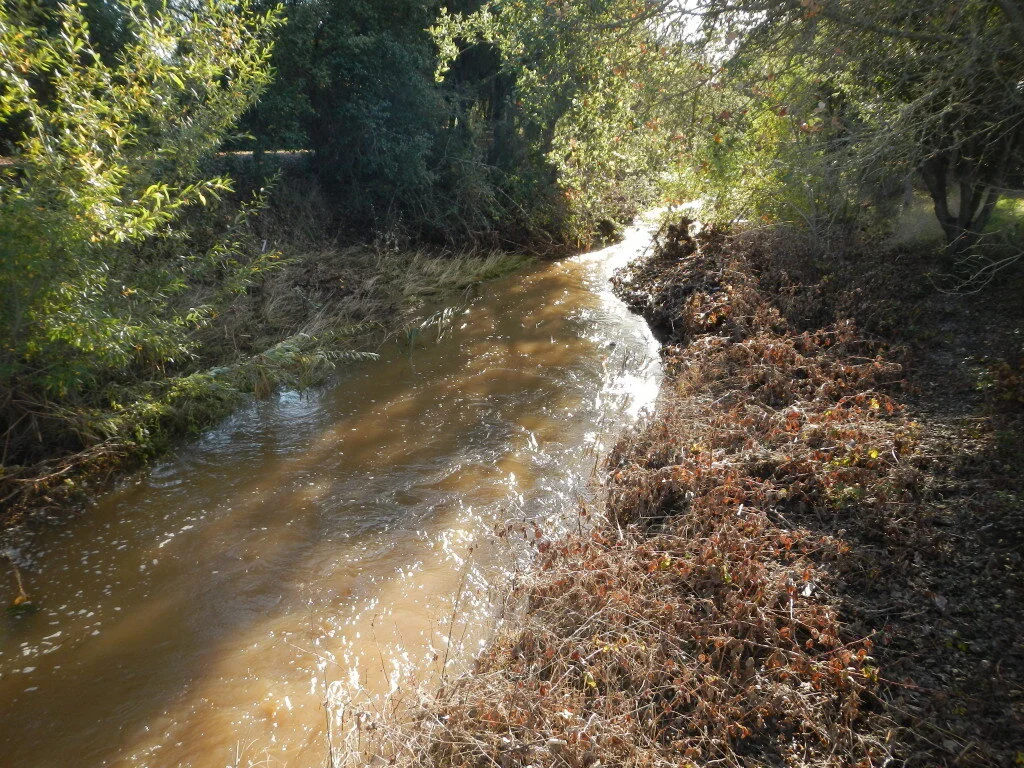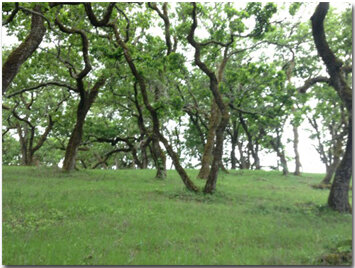History
The Colgan Creek watershed wasn’t always unhealthy and inaccessible. Where Colgan Creek now flows, the Pomo Indians once lived in balance with the natural resources they managed. The Pomo liked Taylor Mountain, where traces of their daily lives have been found by archeologists. Evidence suggests the Pomo maintained the ecosystem for over 10,000 years, giving thanks for food and never taking all. They pruned and groomed plants on an established schedule—for example, once in two or three years for sedge roots—in order to keep plants healthy and harvest the most robust materials for basket making plants.
Sustainability Experts
Each family had their own sourcing area for collecting basket-making plants, and cultivated plants to produce what they needed. They also used pruning, controlled burnings and other sustainable techniques. So when the Europeans saw the beautiful area of Sonoma County, they had no idea they were seeing a garden, well-tended by Pomo—the original sustainability experts.
Paradise Lost
Sustainability was disturbed when outsiders brought in foreign germs and disease, land-seizing and aggressive development. The Pomo people were severed from their ancestral lands and from the practices that sustained their inner and outer lives.
Beginning when the Pomo could no longer practice the sustainable land management that had at once made the landscape both beautiful and productive, the watersheds including those now known as Colgan Creek, Laguna de Santa Rosa and Russian River, entered a period of development and gradual ecological decline.
The Pomo “acknowledged that they had been given a bounteous world and they worked to keep it balanced and unchanged from their Creator’s design.
Imagine their astonishment at the ways of the Spanish, Russians and soon-to-be-Americans.”
-K.C. Patrick,
The Pomo of Lake County
Headwaters History
In 1848, the area that includes the Colgan Creek watershed became American land. In the 1850s, Santa Rosa’s population was 400 and its economy was based on the sales of cattle and potatoes.
John Shakelford Taylor was then homesteading 1,400 acres at the foot of what is now Taylor Mountain. Around 1862, Taylor noticed a mineral springs on his property and built a resort to lure wealthy San Franciscans. They came by stagecoach to stay at Taylor’s White Sulphur Springs
When the 1906 earthquake shifted the rock formations, the spring stopped and business dried up with it. In 1910 the resort was reopened by local businessmen under the faux-Indian place name: Kawana. Since the springs were not producing anymore, water was trucked in. This venture was short-lived.
When the springs business ended, renters took the property and were caught producing over 1,000 gallons of moonshine per day—the largest bootlegging operation ever found in Northern California during prohibition. The property was afterward used as a stocked game preserve.
Although the 1969 earthquake caused the mineral spring to start producing again, the flow did not last. All that remains of the former resort are a few old buildings and some landscaping features.





